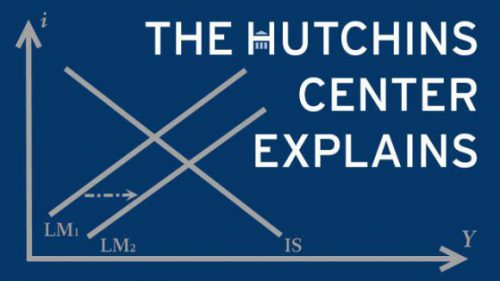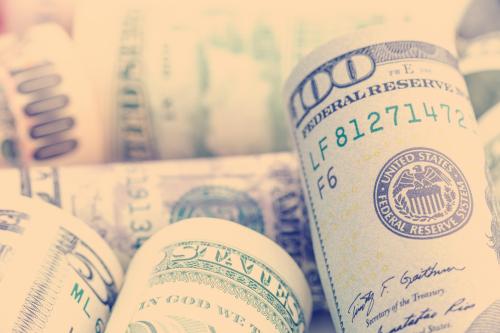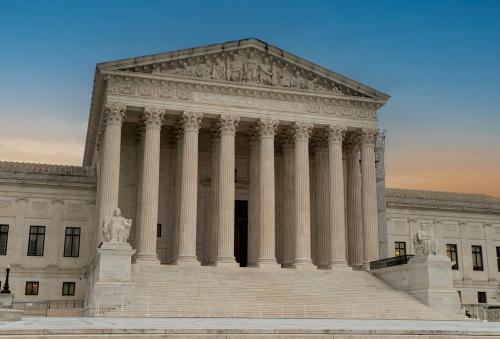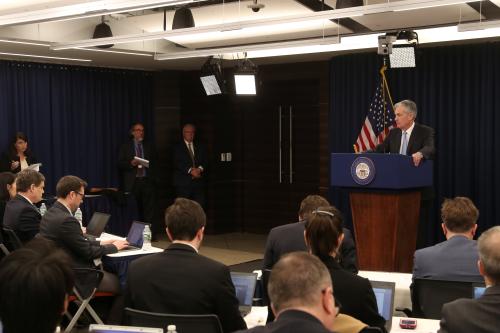This piece was originally published in March 2020, and has been updated to reflect ongoing developments.
The U.S. Treasury used its Exchange Stabilization Fund (ESF) during the COVID-19 pandemic to backstop Federal Reserve lending programs aimed at stabilizing credit and money markets, and in October 2025, proposed to tap it to help Argentina.
Here’s how it works.
What is the Exchange Stabilization Fund?
In general, the Secretary of the Treasury can only spend money that has been appropriated by Congress. But with the consent of the President, the Secretary has substantial leeway to use the money in the ESF that Congress created in the Gold Reserve Act in 1934. The Act established the ESF as a reserve to stabilize the U.S. dollar in case of turmoil in foreign currency markets after the U.S. abandoned the gold standard. But over time, Treasury has mostly used it lend to other economies on the brink of default—for example, to stabilize Mexican government debt in the 1994 peso crisis. As amended in the late 1970s, the Act provides that “the Secretary…with the approval of the President, may deal in gold, foreign exchange, and other instruments of credit and securities.” The ESF holds U.S. government securities, euros, yen, and Special Drawing Rights (SDRs), an international reserve asset created by the IMF. As of August 2025, the ESF had a net balance of $43.4 billion. From time to time, some members of Congress have proposed to limit the Treasury secretary’s ability to tap what they call a “slush fund.”
What’s happening in Argentina?
After Javier Milei was elected president in 2023, he implemented a strict program of fiscal consolidation aimed at balancing the federal budget, lowering inflation, and stimulating growth. While successful in bringing down inflation, his campaign has become increasingly unpopular among voters. In early September 2025, with less than two months to go until the country’s midterm elections, markets panicked when Milei’s La Libertad Avanza party suffered a resounding defeat in the Buenos Aires provincial elections, triggering a sharp decline in the peso—26% against the U.S. dollar between mid-June and mid-September. Argentina’s central bank spent $1 billion of scarce foreign currency reserves to defend the peso.
On September 23, 2025, U.S. Treasury Secretary Scott Bessent pledged a $20 billion bailout for the Argentine government, which he said would be financed by the ESF. Details have not been released, but the support could take the form of a loan, a swap line, or the direct purchase of dollar-denominated Argentine bonds. Secretary Bessent’s announcement stabilized the peso, which appreciated by approximately 9% following Bessent’s comments, and led to a rally in Argentine bond prices. On October 3, Kristalina Georgieva reported that Secretary Bessent told her the package might include use of SDRs held by the U.S. (Argentina is the IMF’s largest borrower.)
Tapping the ESF to aid Argentina was criticized by some in the U.S., who see it as support for an ideological ally of the president at a time when U.S. households are struggling to make ends meet. Others cautioned that Argentina is liable to default on the loan, given the country’s long history of failing to repay its debt.
Has the ESF been tapped to support other countries in the past?
Yes. The Treasury has used the ESF to finance short term loans to emerging market countries facing currency or debt crises—including Argentina in the 1980s. (Argentina repaid all those loans.) In 1994, for example, the Treasury agreed to lend up to $20 billion from the ESF to Mexico to help it stabilize the peso after Congress refused President Bill Clinton’s request to appropriate the money. Mexico borrowed $12 billion, which it paid back, and the U.S. made a $500 million profit. During the Asian financial crisis in 1997, the U.S. offered $3 billion for Indonesia and $5 billion for South Korea from the ESF. Neither country used the loan, in the end. In 2002, Uruguay borrowed $1.5 billion. The loan was repaid in full.
The Treasury used the ESF as a backstop to cover any losses the Federal Reserve might incur through lending programs created to cope with the pandemic. In general, when the Fed lends money to banks and other financial institutions, it wants to be sure it’ll be paid back and insists on collateral, usually in the form of very safe assets like U.S. Treasury debt. In periods of financial turmoil like the 2008 financial crisis and the present crisis, however, the Fed can help stabilize markets by accepting a broader range of assets as collateral for loans to financial institutions. In doing so, it encourages banks to keep lending to businesses and consumers by guaranteeing that they can exchange the resulting assets for cash at the Fed, if necessary. In March 2020, the Fed created or re-opened programs to accept as collateral money market fund assets, corporate bonds and loans, municipal bonds, and securities backed by consumer and small business loans. The Treasury promised the Fed $50 billion out of the ESF to cover any losses in these new lending programs. As of December 2024, the Fed said it didn’t expect any losses. Read more details on the Fed’s lending programs here.
Do taxpayers pay for ESF-backed Fed’s emergency lending?
By providing funds from the ESF, the Treasury is agreeing to cover losses on the Fed’s emergency lending. If there are losses, the taxpayers are on the hook. During the 2008 financial crisis, the Fed experienced no losses on individual loans made under its emergency programs. In fact, the Fed earned an estimated $20 billion in interest and fees on the loans and remitted those profits to the Treasury.
How was the ESF used during the Global Financial Crisis?
In 2008, during the worst of the financial crisis, the Treasury used funds from the ESF to temporarily guarantee deposits in certain money market mutual funds. Ultimately, none of the money market funds defaulted, and so the ESF had no losses from the program. In fact, the program earned about $1.2 billion from fees. Congress subsequently forbade the use of the ESF for this purpose.
The Brookings Institution is committed to quality, independence, and impact.
We are supported by a diverse array of funders. In line with our values and policies, each Brookings publication represents the sole views of its author(s).








Commentary
What is the Exchange Stabilization Fund? How was it used during COVID? How may it be used for Argentina?
October 6, 2025